Neural engineering is a field where neuroscience meets engineering. It aims to create technologies that communicate or improve brain function. By combining biology, computer science, and electrical engineering, it allows us to connect with the brain. This helps in finding new ways to diagnose and treat brain issues.
Sectors like brain devices and brain-computer interfaces are growing fast. This growth comes from more older people and newer, easier medical procedures. The University of Illinois Urbana-Champaign offers an online talk for new students. It covers Bioengineering, Neural Engineering, and Computer Science + Bioengineering. The talk highlights how brain technology and interaction are changing healthcare.
Key Takeaways
- Neural engineering merges neuroscience and engineering to develop brain-enhancing technologies.
- Increasing demand for neurological devices and minimally invasive procedures fuels industry growth.
- The University of Illinois Urbana-Champaign emphasizes neural engineering in its multidisciplinary programs.
- Brain-computer interfaces are at the forefront of neural engineering advancements.
- Neural systems play a significant role in the future of medical diagnostics and treatments.
Introduction to Neural Engineering
Neural engineering is at the cutting edge of biomedical breakthroughs. It combines neuroscience and engineering. The goal is to interface with the nervous system, improving human abilities and fixing neurological issues. Knowing the basics of neural engineering is key to understanding its big effect on medicine and tech.
The human brain is complex, weighing about three pounds and hosting around 86 billion neurons, plus many glial cells. This network is crucial for cognition, which neural engineering seeks to enhance. A good intro to neuroengineering makes its groundbreaking principles clear.
The adult human brain contains about 86 billion neurons and trillions of synapses, making it a focal point of study in neural engineering.
Experts in neural engineering are also looking for ways to treat brain issues like stroke, spinal injury, or epilepsy. They aim to boost brain functions such as memory and attention. But, their work brings up serious questions about privacy, ethics, and the effects on society.
The Foundations of Neural Engineering
The field of neural engineering is fascinating. It links our nervous system with artificial devices. It leans on neural coding, synaptic plasticity, and brain-computer interfaces (BCIs).
Neural Coding
Neural coding is about how neurons use electrical activity to process information. It’s vital for understanding how the brain speaks and processes signals. Researchers have discovered how different patterns are linked to sensations or actions.
This knowledge is essential for advancing BCI technology. It helps in making neural prosthetics more effective.
Synaptic Plasticity
Synaptic plasticity lets synapses change their strength based on activity. It is key to learning and memory. It lets our brain circuits get better over time.
In neural engineering, this concept helps improve artificial networks. It also makes neural devices work better with our bodies.
Brain-Computer Interfaces (BCIs)

BCIs are amazing tools that connect our brains directly with devices. They do this by turning brain signals into commands. This allows people to control things like computers or prosthetics with their minds.
This technology is a game-changer for people who can’t move easily. It also opens up new ways to enhance human abilities.
Neural engineering mixes knowledge from many areas like computational neuroscience and electrical engineering. Our growing know-how in neural coding, synaptic plasticity, and BCI technology lets us create new bridges. These bridges connect our brains with the world of devices.
| Field | Focus | Examples |
|---|---|---|
| Neural Coding | Information representation in neurons | Deciphering sensory and motor signals |
| Synaptic Plasticity | Adaptive changes in synapse strength | Learning and memory |
| Brain-Computer Interfaces (BCIs) | Direct brain-device communication | Controlling prosthetics, assistive technologies |
Brain-Computer Interfaces: Direct Communication with the Brain
Brain-Computer Interfaces, or BCIs, have changed how we think about the brain talking to machines. Now, people can control computers or artificial limbs just by using their brain waves. These amazing tools are divided into three types of brain-computer interfaces: noninvasive, invasive, and minimally invasive BCIs.
Noninvasive BCIs
Noninvasive BCIs work without surgery. They use special sensors on the outside to pick up brain signals. The most widely used technique is EEG, which records the brain’s electric vibes from the scalp. Hans Berger made a big leap in this field 80 years ago with his study of the alpha rhythm.
Since then, inventions like the P300 speller have emerged. It lets users pick letters on a screen just by thinking. Analyzing the brain’s rhythm and response patterns plays a big role in making these technologies work.
Invasive BCIs
Invasive BCIs require putting electrodes right into the brain. This method provides clearer signals but comes with risks. By training the brain, researchers have used this tech to give new abilities to those with serious physical limitations. Since the 1970s, we’ve seen major advances, including using brain signals to operate gadgets.
Minimally Invasive BCIs
Minimally invasive BCIs are less harsh than fully invasive ones but offer better signals than noninvasive types. They use advanced techniques to place devices inside the brain with less risk. With these tools, people can do things like use a computer, send emails, or move robotic arms just by thinking.
| Type of BCI | Methods/Tools | Advantages | Disadvantages |
|---|---|---|---|
| Noninvasive | EEG | Ease of acquisition, no surgery | Lower signal clarity |
| Invasive | Microelectrodes, ECoG | High signal clarity | Requires surgery, potential risks |
| Minimally Invasive | Stereotactic depth macroelectrodes, intracortical microarrays | Balance between clarity and invasiveness | Less established than other methods |
Neurostimulation Technologies
Neurostimulation technologies have changed how we treat neurological issues. They bring new options for treatment and research. Among these, Deep Brain Stimulation (DBS) and Transcranial Focused Ultrasound (tFUS) stand out. They use new ways to adjust brain activity and ease symptoms of various diseases.
Deep Brain Stimulation (DBS)
DBS technology works by placing electrodes in the brain. These help control abnormal brain activity. It’s helpful for Parkinson’s disease and essential tremor. DBS targets treatment accurately, reducing bad symptoms and bettering life quality.

Wireless and battery-free implants introduced on April 27, 2023, are big advancements. They offer constant brain activity regulation without regular surgeries or changing batteries. This improves patient comfort and the device’s life.
Transcranial Focused Ultrasound (tFUS)
tFUS is a big step in noninvasive neurostimulation. It targets brain areas with ultrasound waves. This doesn’t require surgery. It’s a good choice for patients who prefer not to have invasive procedures.
tFUS doesn’t just adjust brain circuits. It can treat many neurological issues. For example, it works for psychiatric disorders, chronic pain, and delivering drugs directly to the brain.
DBS and tFUS offer two unique ways to help advance neurostimulation methods. As the demand for these devices grows, seen from 2013 to 2024, they continue to improve treatment for brain conditions. They offer new...
You have read 25% of the article. The rest is for our community. Already a member? Log in
(and also to protect our original content from scraping bots)
Innovation.world community
Login or Register (100% free)
View the rest of this article and all members-only content and tools.
Only real engineers, manufacturers, designers, marketers professionals.
No bot, no hater, no spammer.
FAQ
What is neural engineering?
Neural engineering is where neuroscience meets engineering. It’s about making technologies that help and learn more about how our brains work. These technologies use ideas from biology, computer science, and electrical engineering.
They aim to understand, fix, and enhance brain functions. This includes helping people with neurological issues.
What is neural coding?
Neural coding is about how brain cells communicate. It’s key in neural engineering. Understanding it helps researchers know how our brains interpret the world around us.
What are brain-computer interfaces (BCIs)?
BCIs let the brain talk directly to machines. They turn thoughts into actions without moving. This means you can control computers or prosthetics just by thinking.
What are the differences between noninvasive, invasive, and minimally invasive BCIs?
Noninvasive BCIs don’t enter the body. They use sensors on your skin to read brain activity. Invasive BCIs are put right into the brain for clearer signals.
Minimally invasive BCIs are a halfway option. They’re less intense than full surgery.
How does Deep Brain Stimulation (DBS) work?
DBS puts tiny electrodes in the brain. These electrodes stimulate certain areas. This helps manage conditions like Parkinson’s by adjusting how brain cells talk to each other.
What is Transcranial Focused Ultrasound (tFUS)?
tFUS uses sound waves to safely change brain activity. It’s a new way to treat brain disorders without surgery. It shows promise for noninvasive treatment.
What are some medical applications of neural engineering?
Neural engineering tackles neurological issues with DBS and new diagnostics like detailed brain scans. It also helps in rehabilitation using neural interfaces.
What are wearable neural devices?
Wearable devices like EEG headsets track how your brain works in real time. They make it easy to monitor your brain health every day.
What are neuroprosthetics?
Neuroprosthetics help people with disabilities regain or improve their senses and movement. They use new materials and learning algorithms to boost independence and life quality.
How is artificial vision used in neural engineering?
Artificial vision helps people who can’t see well. It creates a way for them to “see” using technology. This helps them interact better with their surroundings.
What role does AI play in neural engineering?
AI improves neural devices by making them smarter and more adaptable. It works on analyzing data better. This helps noninvasive BCIs and other tech to be more effective.
What are some challenges faced in neural engineering?
Challenges include ethical worries and understanding complex brain data. There’s also the need to make devices very precise. Plus, we must think about safety and the long-term impact of these devices.
What ethical and societal concerns are associated with neural engineering?
There are concerns about privacy and how neural data is used. It’s important to have strong rules to protect people and use the tech ethically.
What future possibilities exist for neural engineering?
The future holds exciting tech that could lead to big discoveries in health and tech. More research will bring about advanced devices and treatments.
How is neural engineering impacting everyday life?
Neural engineering is making its way into our daily lives through apps and accessibility tools. It offers better experiences with BCIs and helps people with disabilities greatly.
External Links on Neural Engineering
International Standards
- ISO 13485: 2016 Medical devices -- Quality management systems -- Requirements for regulatory purposes
- IEC 60601-1: 2012 Medical electrical equipment -- Part 1: General requirements for basic safety and essential performance
- ISO/IEC 27001: 2013 Information technology -- Security techniques -- Information security management systems -- Requirements
(hover the link to see our description of the content)
Glossary of Terms Used
Brain-Computer Interface (BCI): a system that enables direct communication between the brain and external devices, allowing for control of technology through neural activity. It typically involves signal acquisition, processing, and translation into commands for applications such as assistive devices or neuroprosthetics.
Computed Tomography (CT): a medical imaging technique that uses X-rays and computer processing to create cross-sectional images of the body, allowing for detailed visualization of internal structures and tissues. It enhances diagnostic capabilities by providing three-dimensional representations from two-dimensional data.
Food and Drug Administration (FDA): a federal agency of the United States Department of Health and Human Services responsible for regulating food safety, pharmaceuticals, medical devices, cosmetics, and tobacco products to ensure public health and safety through scientific evaluation and enforcement of compliance standards.
Institute of Electrical and Electronics Engineers (IEEE): a professional association dedicated to advancing technology in electrical engineering, electronics, computer science, and related fields through publications, conferences, and standards development. It fosters innovation and collaboration among professionals and researchers globally.
Robotic Process Automation (RPA): a technology that uses software robots to automate repetitive, rule-based tasks in business processes, enabling increased efficiency, accuracy, and productivity by mimicking human interactions with digital systems.
Technological Readiness Levels (TRL): a scale used to assess the maturity of a technology, ranging from basic research and development to full deployment, typically categorized from 1 (concept) to 9 (operational use), facilitating evaluation and decision-making in technology development processes.





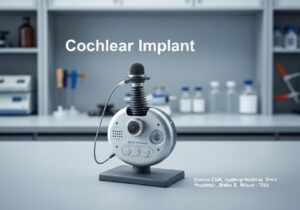


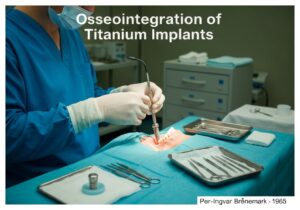


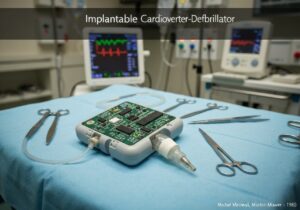
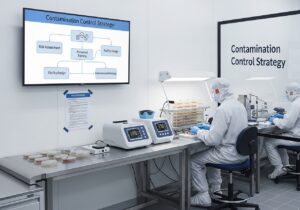



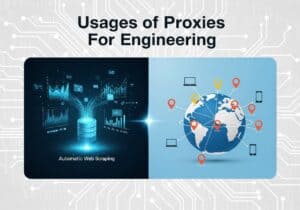



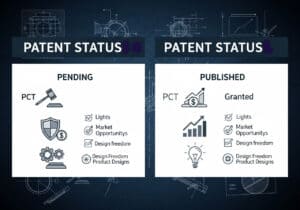

Interesting read! But dont you think were playing God with neural engineering? Where do we draw the line with tech in our brains?
include more details about the ethical considerations and privacy concerns associated with brain-computer interfaces
great job highlighting the potential of neural engineering
It’s exciting to see neural engineering advancing accessibility
Do you think Neural Engineering could potentially pave the way for mind-reading technology? It sounds sci-fi, but who knows?
Interesting piece! But, does neural engineering risk creating a digital divide between those who can and cannot afford it?
Related Posts
Contamination Control Strategy & Cleanroom 26 Best Practices
From GMP to cGMP: the Full Mastering Guide
IQ OQ PQ Process Validation: Full Theory & Praxis
The “Lone Nut”, the “First Follower”, and the “Fast Follower” Strategies
Best 20 Usages of Proxies For Engineering
How to Sell Ice to Eskimos (aka Marketing Shenanigans)